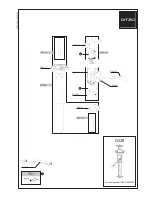
Turning on power
First, open the lens cap by flipping the switch on the
left side of the lens hood. The turn the POWER/MODE
switch up to the <ON> position while pressing the
lock release button. The mode lamp <CAMERA>
lights up in red and the camera goes into standby
status (<CAMERA> mode).
If the POWER/MODE switch is turned up to the
<MODE> postion, the mode lamp <PB> will light
up in greenand the camera goes to playback mode (for
playing back footage already recorded). Every time the
switch is turned to the <MODE> postion, the mode
will change between <CAMERA> mode and <PB>
mode.
To turn the camera off, turn the POWER/MODE switch
up to the <OFF> position while pressing the lock
release button. The mode lamp <CAMERA>/<PB>
goes off.
Photograpy Basics
EXPOSURE
: The amount of light entering the camera, controlled by the IRIS. The iris determines the
aperture, or the variable-sized hole allowing light to enter the lens. The size of the hole is measured in
f-stops. The smaller the f-stop number, the larger the size of the hole; the larger the f-stop number, the
more light it “stops” from coming through and the smaller the hole. The difference between f-stops is
equal to doubling or halving the amount of light entering the lens.
FOCUS
: Point at which objects in front of the lens form a sharp image. Focus is determined by the
distance between the lens and the subject.
DEPTH OF FIELD
: The distance between the nearest and farthest objects in a scene that appear
acceptably sharp in an image. The lower the f-stop number, the shallower depth of field becomes.
WHITE BALANCE
: adjusts the color of the image. The video image is made up of red, green and blue;
adjusting the white balance changes the sensitivity of the camera to each of these colors to
compensate for the color temperature of ambient light. Tungsten light bulbs tend to have more red and
are “warmer”, while sunlight has more blue (“cooler”). The camera must be adjusted accordingly to
balance these differences out, and accurately reproduce color.
2
Summary of Contents for AG-AC130A Series
Page 2: ......



































